Even though oral fluid drug testing has been around for more than 2 decades, it appears that many employers are taking it seriously for the first time. For instance, in a 2023 survey of workforce drug testing providers, 87% reported offering oral fluid testing, compared to 39% in 2019. When asked what drug testing method will be most used in the future, 46% said oral fluid testing, in 2019, the same percentage indicated urine testing would be used most often.[1]
Employers must manage an often-overwhelming number of benefits and vendor partnerships, so a streamlined solution can both save leaders time and contribute to operational efficiency. With Quest Diagnostics Workforce Health Solutions, employers now have one primary contact for population health management, clinical testing, and drug testing, reducing administrative burdens and optimizing resource allocation. This unified offering not only saves time and costs but also allows for a more agile response to emerging health challenges.
Why all the attention for oral fluid testing? There are probably many reasons, but 3 stand out:
- In October of 2019, the Substance Abuse and Mental Health Services Administration (SAMHSA) issued final regulations for lab-based oral fluid testing to make it possible for federal employers to choose between oral fluid and urine testing [2]
- In May 2023, the US Department of Transportation (DOT) issued final regulations that, once fully implemented, will allow workplace drug testing under DOT regulated employers to choose lab-based oral fluid as an alternative to traditional urine testing [3]
- On January 1, 2024, 2 states, California and Washington, enacted laws that impact employers’ ability to test, receive results, and/or act upon for the presence of the “non-psychoactive metabolite” of cannabis, which is the predominant metabolite of THC detected in urine. Oral fluid drug tests detect parent THC or the psychoactive form of marijuana rather than metabolites of marijuana [4] [5]
These 3 developments are significant as employers across the country consider how to best keep their workplaces safe and healthy. As a result of these developments and others, oral fluid drug testing is getting a lot of attention from both drug testing providers and employers. This increased interest comes with questions from those who may be new to oral fluid drug testing. These questions serve as a great starting point to discuss how oral fluid drug testing can help a drug-free workplace program become more versatile.
Quest Diagnostics Workforce Health Solutions is uniquely positioned to not only answer some of these questions, but we can help offer insights into this testing type once considered “novel”.
New to drug testing? Check out this helpful video showing the life of a drug test and the many controlled steps we take to ensure each specimen is cared for.
5 key insights every provider and employer should know about oral fluid testing
Can employers use oral fluid testing?
The good news is lab-based oral fluid testing is permitted in most states, but please confirm the states guidelines based on where testing is needed.
When it comes to point of collection oral fluid drug testing the answer is a little more complicated. Much depends on a state’s drug-testing laws. Some state laws only mention lab-based urine testing, while others appear to permit point of collection testing, but only with urine. Additionally, there are more than a dozen states with what are known as voluntary drug-testing laws, which means the restrictions or requirements of those laws, which often only permit lab-based urine testing, only apply to companies that voluntarily participate in a state drug testing program. Outside of those voluntary programs, employers are free to conduct testing with aid from their legal counsel to ensure adherence to their state laws.
Learn more state laws and drug testing in the age of legal marijuana.
Additionally, there are several states with laboratory licensing laws that require all drug tests to be conducted at a properly licensed laboratory. The state of New York is an example.
Lab-based urine testing is permitted in all 50 states, but for alternative testing methods the best advice is to consult with your company’s legal counsel to answer questions about the permissibility of other drug testing methods.
Is oral fluid testing accurate?
There’s good news here that comes with a disclaimer. Yes, the basic science of oral fluid testing is accurate at detecting all the commonly abused drugs. However, not all lab-based or rapid-result oral fluid testing methods are equal at detecting drugs.
Here again, state drug-testing laws come into play as some state laws require employers to use specific laboratory certifications and/or an FDA-cleared point of care test device or collection device. Quest Diagnostics uses oral fluid to test for methamphetamines, amphetamine, opiates (morphine, codeine, hydromorphone, hydrocodone, 6-AM), PCP, marijuana, and cocaine.
Learn more about oral fluid drug testing by checking out these helpful frequently asked questions.
The Substance Abuse and Mental Health Services Administration (SAMHSA) issued regulations in 2019, further solidifying the reliability of oral fluid drug testing and specifically addressing the science behind this alternative matrix of screening:
“The scientific basis for the use of oral fluid as an alternative specimen for drug testing has now been broadly established and the advances in the use of oral fluid in detecting drugs have made it possible for this alternative specimen to be used in federal programs with the same level of confidence that has been applied to the use of urine.” [6]
How long are drugs detectable in oral fluid?
The answer to this question depends on many factors, including the drug (marijuana, cocaine, etc) and the drug testing method (laboratory vs point of collection-result).
The ability to detect drugs in an oral fluid sample quickly after usage is one of its key attributes, made possible because the parent drug, rather than a metabolite of a drug, is detectable in oral fluid. This is why oral fluid testing is often referred to as a “recent use” drug testing detection method. By contrast, drugs become detectable in urine once the body metabolizes the substance, which can take about 6-7 hours. Drugs then remain detectable in a urine sample for 24-72 hours, longer for drugs like marijuana, at the cutoff levels commonly employed. This is why urine testing and hair testing, which has an even longer window of detection, are often used to identify more long-term drug use.
What is the difference between rapid-result and lab-based oral fluid testing?
Oral fluid testing, either at a laboratory or with a rapid-result device, has proven to be accurate and reliable, but much depends on the specific laboratory and the specific device chosen. There are differences in which drugs you can test for, the cutoff levels, and accuracy of lab-based testing versus rapid-result testing, especially when it comes to detecting marijuana.
There are some benefits to rapid-result oral fluid testing. Because oral fluid samples are so much easier to collect compared to urine, collections can take place virtually anywhere at any time. Further, because the donor and the collector are always in sight of one other during the whole collection process, many common subversion methods used with urine testing are virtually impossible to use with oral fluid. Also, rapid-result oral fluid testing renders a near-immediate result which makes employment decisions faster and easier to make, including being able to make same-day hiring decisions.
Is oral fluid testing practical?
Will oral fluid testing work for you and help you achieve your drug testing objectives as a company? That is a question that must be answered before you make the switch from urine to oral fluid testing; after all, urine testing works, it’s accurate, it’s legal in every state, and many companies have been relying on it for over 3 decades. But there are societal and legal trends that make it more difficult for employers to rely solely on urine testing, as has become the case in California and Washington, and in other states should they adopt similar laws.
The legalization of marijuana is forcing employers to look for a drug testing method capable of detecting very recent drug use with an overall shorter window of detection. Why, you ask? Changes in states requiring the ability to detect psychoactive drug forms (i.e., parent THC in marijuana) which oral fluid can provide. Some states require employers to show some evidence of impairment in addition to a positive drug test result before taking adverse employment action. And while drug testing does not prove someone is impaired, a testing method that can identify recent use with a shorter window of detection coupled with a random drug testing program, can help employers evaluate drug use in their workplace and take the action needed to provide their employees with help or take additional steps per their drug-free workplace policy.
Conclusion
Oral fluid testing seems to be getting a lot more attention these days and probably for very good reasons. It’s permitted in most states. It’s scientifically sound and has been endorsed by the federal government. It’s relatively easy to collect and it’s difficult to subvert. More importantly in today’s marijuana-legal environment, it’s possible to detect recent drug use for a shorter period of time.
Some companies may choose to switch to oral fluid, but many may opt to combine oral fluid testing with urine testing to get the best of both methods. In any event, it’s good to have options when it comes to maintaining a safe, productive, and drug-free workplace.
To learn more about oral fluid drug testing, visit our website or connect with us online.
1Current Consulting Group. 2023 Drug Testing Industry Survey. Accessed March 11, 2024.
2Department of Health and Human Services. Federal Register mandatory guidelines for federal workplace drug testing programs—oral/fluid. Federal register. P. 57554. Accessed March 2024. https://www.samhsa.gov/sites/default/files/programs_campaigns/division_workplace_programs/final-mg-oral-fluid.pdf
3US Department of Transportation. Part 4 final rule – DOT summary of changes. Accessed March 2024. https://www.transportation.gov/odapc/Notice_Summary_May_2023
4AB-2188 Discrimination in employment: use of cannabis. Accessed March, 2024. https://leginfo.legislature.ca.gov/faces/billNavClient.xhtml?bill_id=202120220AB2188
5Final bill report. ESSB 5123 concerning the employment of individuals who lawfully consume cannabis. Accessed, March 2024. https://lawfilesext.leg.wa.gov/biennium/2023-24/Pdf/Bill%20Reports/Senate/5123-S.E%20SBR%20FBR%2023.pdf
 Your Privacy Choices
|
Privacy Notices
|
Terms
|
Language Assistance / Non-Discrimination Notice | Asistencia de Idiomas / Aviso de no Discriminación | 語言協助 / 不䈚視通知
Your Privacy Choices
|
Privacy Notices
|
Terms
|
Language Assistance / Non-Discrimination Notice | Asistencia de Idiomas / Aviso de no Discriminación | 語言協助 / 不䈚視通知
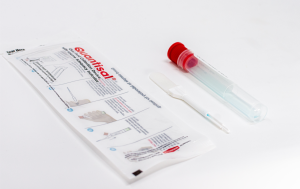
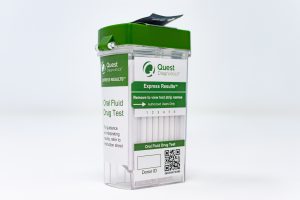
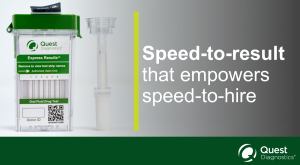
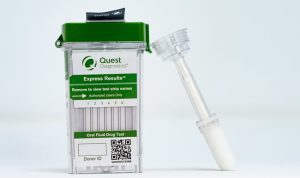
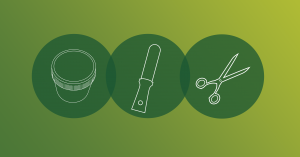
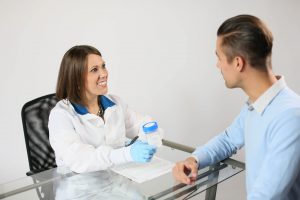

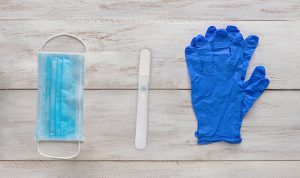
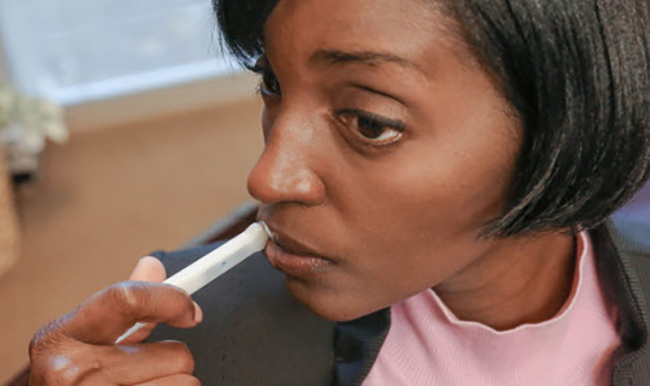
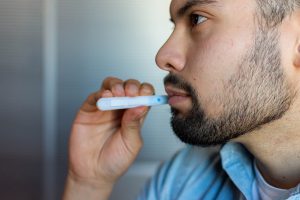
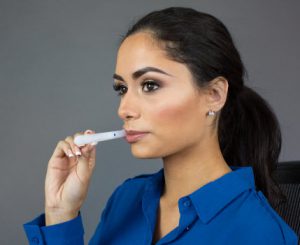
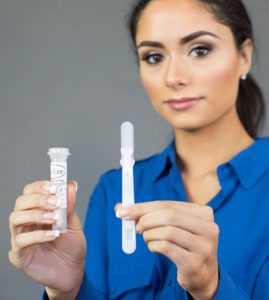
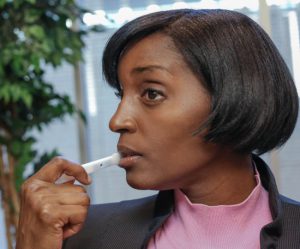
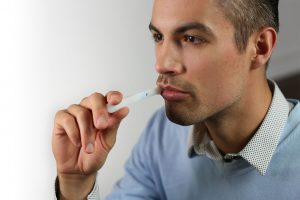




Even though oral fluid drug testing has been around for more than 2 decades, it appears that many employers are taking it seriously for the first time. For instance, in a 2023 survey of workforce drug testing providers, 87% reported offering oral fluid testing, compared to 39% in 2019. When asked what drug testing method will be most used in the future, 46% said oral fluid testing, in 2019, the same percentage indicated urine testing would be used most often.[1]
Employers must manage an often-overwhelming number of benefits and vendor partnerships, so a streamlined solution can both save leaders time and contribute to operational efficiency. With Quest Diagnostics Workforce Health Solutions, employers now have one primary contact for population health management, clinical testing, and drug testing, reducing administrative burdens and optimizing resource allocation. This unified offering not only saves time and costs but also allows for a more agile response to emerging health challenges.
Why all the attention for oral fluid testing? There are probably many reasons, but 3 stand out:
These 3 developments are significant as employers across the country consider how to best keep their workplaces safe and healthy. As a result of these developments and others, oral fluid drug testing is getting a lot of attention from both drug testing providers and employers. This increased interest comes with questions from those who may be new to oral fluid drug testing. These questions serve as a great starting point to discuss how oral fluid drug testing can help a drug-free workplace program become more versatile.
Quest Diagnostics Workforce Health Solutions is uniquely positioned to not only answer some of these questions, but we can help offer insights into this testing type once considered “novel”.
New to drug testing? Check out this helpful video showing the life of a drug test and the many controlled steps we take to ensure each specimen is cared for.
5 key insights every provider and employer should know about oral fluid testing
Can employers use oral fluid testing?
The good news is lab-based oral fluid testing is permitted in most states, but please confirm the states guidelines based on where testing is needed.
When it comes to point of collection oral fluid drug testing the answer is a little more complicated. Much depends on a state’s drug-testing laws. Some state laws only mention lab-based urine testing, while others appear to permit point of collection testing, but only with urine. Additionally, there are more than a dozen states with what are known as voluntary drug-testing laws, which means the restrictions or requirements of those laws, which often only permit lab-based urine testing, only apply to companies that voluntarily participate in a state drug testing program. Outside of those voluntary programs, employers are free to conduct testing with aid from their legal counsel to ensure adherence to their state laws.
Learn more state laws and drug testing in the age of legal marijuana.
Additionally, there are several states with laboratory licensing laws that require all drug tests to be conducted at a properly licensed laboratory. The state of New York is an example.
Lab-based urine testing is permitted in all 50 states, but for alternative testing methods the best advice is to consult with your company’s legal counsel to answer questions about the permissibility of other drug testing methods.
Is oral fluid testing accurate?
There’s good news here that comes with a disclaimer. Yes, the basic science of oral fluid testing is accurate at detecting all the commonly abused drugs. However, not all lab-based or rapid-result oral fluid testing methods are equal at detecting drugs.
Here again, state drug-testing laws come into play as some state laws require employers to use specific laboratory certifications and/or an FDA-cleared point of care test device or collection device. Quest Diagnostics uses oral fluid to test for methamphetamines, amphetamine, opiates (morphine, codeine, hydromorphone, hydrocodone, 6-AM), PCP, marijuana, and cocaine.
Learn more about oral fluid drug testing by checking out these helpful frequently asked questions.
The Substance Abuse and Mental Health Services Administration (SAMHSA) issued regulations in 2019, further solidifying the reliability of oral fluid drug testing and specifically addressing the science behind this alternative matrix of screening:
“The scientific basis for the use of oral fluid as an alternative specimen for drug testing has now been broadly established and the advances in the use of oral fluid in detecting drugs have made it possible for this alternative specimen to be used in federal programs with the same level of confidence that has been applied to the use of urine.” [6]
How long are drugs detectable in oral fluid?
The answer to this question depends on many factors, including the drug (marijuana, cocaine, etc) and the drug testing method (laboratory vs point of collection-result).
The ability to detect drugs in an oral fluid sample quickly after usage is one of its key attributes, made possible because the parent drug, rather than a metabolite of a drug, is detectable in oral fluid. This is why oral fluid testing is often referred to as a “recent use” drug testing detection method. By contrast, drugs become detectable in urine once the body metabolizes the substance, which can take about 6-7 hours. Drugs then remain detectable in a urine sample for 24-72 hours, longer for drugs like marijuana, at the cutoff levels commonly employed. This is why urine testing and hair testing, which has an even longer window of detection, are often used to identify more long-term drug use.
What is the difference between rapid-result and lab-based oral fluid testing?
Oral fluid testing, either at a laboratory or with a rapid-result device, has proven to be accurate and reliable, but much depends on the specific laboratory and the specific device chosen. There are differences in which drugs you can test for, the cutoff levels, and accuracy of lab-based testing versus rapid-result testing, especially when it comes to detecting marijuana.
There are some benefits to rapid-result oral fluid testing. Because oral fluid samples are so much easier to collect compared to urine, collections can take place virtually anywhere at any time. Further, because the donor and the collector are always in sight of one other during the whole collection process, many common subversion methods used with urine testing are virtually impossible to use with oral fluid. Also, rapid-result oral fluid testing renders a near-immediate result which makes employment decisions faster and easier to make, including being able to make same-day hiring decisions.
Is oral fluid testing practical?
Will oral fluid testing work for you and help you achieve your drug testing objectives as a company? That is a question that must be answered before you make the switch from urine to oral fluid testing; after all, urine testing works, it’s accurate, it’s legal in every state, and many companies have been relying on it for over 3 decades. But there are societal and legal trends that make it more difficult for employers to rely solely on urine testing, as has become the case in California and Washington, and in other states should they adopt similar laws.
The legalization of marijuana is forcing employers to look for a drug testing method capable of detecting very recent drug use with an overall shorter window of detection. Why, you ask? Changes in states requiring the ability to detect psychoactive drug forms (i.e., parent THC in marijuana) which oral fluid can provide. Some states require employers to show some evidence of impairment in addition to a positive drug test result before taking adverse employment action. And while drug testing does not prove someone is impaired, a testing method that can identify recent use with a shorter window of detection coupled with a random drug testing program, can help employers evaluate drug use in their workplace and take the action needed to provide their employees with help or take additional steps per their drug-free workplace policy.
Conclusion
Oral fluid testing seems to be getting a lot more attention these days and probably for very good reasons. It’s permitted in most states. It’s scientifically sound and has been endorsed by the federal government. It’s relatively easy to collect and it’s difficult to subvert. More importantly in today’s marijuana-legal environment, it’s possible to detect recent drug use for a shorter period of time.
Some companies may choose to switch to oral fluid, but many may opt to combine oral fluid testing with urine testing to get the best of both methods. In any event, it’s good to have options when it comes to maintaining a safe, productive, and drug-free workplace.
To learn more about oral fluid drug testing, visit our website or connect with us online.
1Current Consulting Group. 2023 Drug Testing Industry Survey. Accessed March 11, 2024.
2Department of Health and Human Services. Federal Register mandatory guidelines for federal workplace drug testing programs—oral/fluid. Federal register. P. 57554. Accessed March 2024. https://www.samhsa.gov/sites/default/files/programs_campaigns/division_workplace_programs/final-mg-oral-fluid.pdf
3US Department of Transportation. Part 4 final rule – DOT summary of changes. Accessed March 2024. https://www.transportation.gov/odapc/Notice_Summary_May_2023
4AB-2188 Discrimination in employment: use of cannabis. Accessed March, 2024. https://leginfo.legislature.ca.gov/faces/billNavClient.xhtml?bill_id=202120220AB2188
5Final bill report. ESSB 5123 concerning the employment of individuals who lawfully consume cannabis. Accessed, March 2024. https://lawfilesext.leg.wa.gov/biennium/2023-24/Pdf/Bill%20Reports/Senate/5123-S.E%20SBR%20FBR%2023.pdf